Day 3 :
- Dear Euro Nursing 2018 attendees!
We would like to inform you that 3rd Day of the conference i.e., (October 10th, 2018) is scheduled for Business to Business Meeting, Networking with Keynotes, speakers, Moderator and lunch will be provided from 12:30 -13:30.
We are very much glad to anticipate your presentation at networking and lunch session on 3rd day of the conference.
Thanks and regards,
Valentina Esther
Euro Nursing 2018
Session Introduction
Kristine Anne Scordo
Wright State University, USA
Title: Recognition and Treatment of HFrEF (Systolic) and HFpEF (Diastolic): Get with the Guidelines

Biography:
Dr. Kristine Scordo is professor and director of the Adult-gerontology Acute Care Nurse Practitioner program at Wright State University, Dayton, Ohio. She has over 30 years’ experience in cardiology and currently practices at Schuster Cardiology Associates, Dayton, Ohio. She is a nationally known speaker with multiple publications who has done multiple presentations on topics in cardiology world-wide and is the chair of the Advanced Practice Registered Nurses (APRNs) for the American College of Cardiology.
Abstract:
Diastolic heart failure, or preserved EF (ejection fraction) heart failure and systolic heart failure are two clinical subsets of the syndrome of chronic heart failure that are most commonly encountered in clinical practice. This session focuses on the recognition, treatment and prevention of heart failure, along with discussion of current guidelines and research that will assist practitioners to effectively manage these patients.
Objectives:
- Differentiate etiology between HFrEF and HFpEF
- Discuss signs and symptoms of HFrEF and HFpEF
- Discuss diagnostic findings of HFrEF and HFpEF
- Discuss treatment differences between HFrEF and HFpEF
Lily Huang Carrier
Nursing Career Consultants LLC, USA
Title: How to Promote the Leadership Role of Nursing Profession in the Client-Centered Life Care Elder Law Practice
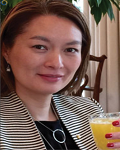
Biography:
Lily Huang Carrier is Founder and CEO at Nursing Career Consultants LLC, USA. Previously she worked as an Office Manager also as an Elder Care Case Manager at The Law Offices of David L. Carrier P. C., USA during 2006 to 2014. She is studied in Michigan State University, USA.
Drawing upon her experience as a successful nurse entrepreneur and business mentor in both America and China, Lily Huang Carrier RN, MA, founded Nursing Career Consultants, the foremost experts in assisting Nursing companies/individuals growing their business in simple, effective and powerful ways!
Started as a med-surg nurse, Lily built a thriving post-operative care business, hosted a television program to help local businesses grow, which was broadcast across China.
Lily has been drawn to teaching and coaching all her life. She earned her Master of Arts in Education from Guangxi Normal University, where she also served on the faculty.
She embraced her visiting scholar opportunity to United States and earned her nursing degree from Michigan State University, worked in different settings of critical nursing, built a prosperous life care elder law and business law practice with her husband.
Lily’s eBook Reveals Little Used Nursing Business Generation Techniques for Sustainable Success, and serves as an invaluable how-to-guide to achieve dependable success of any sized Nursing Business. Obtain your FREE copy at NCC website: www.NursingCareerConsultants.com
In her life-changing book: Unlock! Nurse Entrepreneurs, Reclaim Your Hidden Power, Lily explores the true nature of success for nursing professionals seeking freedom, income, and respect to achieve personal and professional growth.
From practical to philosophical, Lily would like to share with you all that she has acquired along the way at:Â www. NursingCareerConsultants.com
Abstract:
Accelerating demographic changes brought on by the aging of the “Baby Boom†generation have created new leading collaborative opportunities for innovative nursing profession. Given the conservative nature of the legal, financial and medical professions, the time is ripe for nurses to take the lead in demonstrating innovative solutions to older Americans’ demands for continued autonomy and self-actualization as the reality of diminished physical and mental vigor can no longer be denied. Unlike the stereotypes ascribed to financial, legal and medical professionals, nurses occupy a unique position of trust with the older population. Since we are dealing with client’s life support system, it is us orchestrating the services necessary for continued independence.
The historic notions of patient care are no longer sufficient, given the extreme cost of that care. Integrating medical, financial and elder law solutions into traditional notions of geriatric care, in collaboration with legal and financial professionals is essential. Nurses are well-suited by inclination and temperament to assume a leadership role in this transformation, provided we have the proper plans, steps and tools.
We can be not only advocates with a strong clinical background, excellent communicators with a myriad of resources, but also, more importantly, the essential and critical leaders to optimize elder clients’ autonomy, independence and self-actualization.
Â

Biography:
Dr. Will Loeffler, Ph.D., University of Michigan, former Ford Motor Company University Endowed Chair for Statistical Studies at Eastern Michigan University, former Examiner and Criterion Writer in Manufacturing, Service, and HealthCare for first three years of the Malcolm Baldrige U.S. National Quality Award, and former hospital board trustee in three systems.
Abstract:
Utilizing the metaphor of an astronaut travelling to the dark side of the moon, the author (a heart transplant patient 4 years post-surgery) describes in detail the psychosocial processes the patient undergoes in preparing for, enduring, and recovering from a heart transplant.
Specific stages are explored for the range of coping mechanisms and reframing methods necessary to keep moving forward in a productive way amid protocols, chaos, pain, and uncertainty.
Opportunities for healthcare system improvements for care of patients are presented which can be utilized in cardiology and other settings where extended trauma is involved.
Rahel Bahru
McGill University, Canada
Title: Perceptions of nursing care to promote Self-management in chronic kidney disease
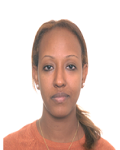
Biography:
Rahel Bahru has completed her Masters of applied science (clinical nurse specialist) in nursing at the age of 30 years from Ingram School of Nursing, McGill University. She has completed this qualitative research project as part of her nursing master’s programme and presented at nursing exploration conference in Montreal on October 2015. She is currently works at Scripps Health, San Diego, CA in cardiac catheterization lab. I have done one poster presentation and involved in other health care quality improvement projects.     Â
Abstract:
Hemodialysis patients often deal with complex lifestyle changes such as diet and fluid restrictions that may alter their physical and emotional well-being. Nurses play an important role in promoting self-management and assisting patients to cope with these changes. Purpose: To explore hemodialysis patients’ perspectives of nursing care that enables or hinders their ability to manage their illness. Methods: A qualitative descriptive design was used. Six male and three female hemodialysis patients were interviewed during their outpatient dialysis treatment at a university affiliated hospital. Result: Three major themes emerged: 1) What it means to live with chronic kidney disease 2) Managing the illness and treatment regimen, and 3) Nature of the therapeutic relationship with nurses to promote self-management. Patients’ narratives also revealed six important features of the nurse-patient relationship. Conclusion: Patients identified the nurse’s friendly demeanour and being patient-centered as care that assisted them to self-manage. These findings underscore the importance of creating a nurturing and supportive environment, and focusing on patients’ individual needs. Reflective practice may be a helpful strategy to assist the nurse to consider the interpersonal aspect of the nurse-patient relationship. The nurse’s use of motivational interviewing may help to gain the patients’ perspective and engage them in their care.
Pi-Chi Wu
Chiayi Chang Gung Memorial Hospital, Taiwan
Title: Using simulated clinical skills exams to improve nursing skills of new nurses

Biography:
Wu Pi Chi earned her Master’s Degree from Chang Jung Christian University, School of nursing in 2009. She is a nursing supervisor at Chang Gung Memorial Hospital, where she has worked for 24 years. She has a wealth of nursing experience in a wide variety of departments, including the ER, thoracic ward, emergency ICU, surgical service, rheumatology ward and NICU. She is currently supervising departmental services for maternity and pediatrics.
Abstract:
Background: In addition to the pressures facing patient care, new nurses have the ability to directly affect quality of care while adapting to new processes, environments and teamwork. Early cultivation correctness of execution expertise can enhance nursing ability and confidence while ensuring patient safety.
Objective: This study aims to understand recent clinical skills examination evaluations of new nurses.
Methods: A nursing department in southern Taiwan participated in clinical skills examinations of 87 new nurses who self-evaluated a purpose sampling, "Clinical Nursing Skills Survey Form". The 60 minute examination evaluated ten common clinical nursing skills and simulated new staff skills. This was followed by an evaluation of the analogue investigation. A total of 87 valid questionnaires out of 88 were returned. The effective response rate was 98.86%.
Results: Education levels (university: 90.8%, junior college: 9.2%), average nursing experience (68.4 days), pre-exam anxiety self-assessment level (7.92 points out of 10). A scale from 1 to 5, higher scores indicating more satisfied, test preparation satisfaction (3.28), post-test satisfaction (3.32). Evaluation of the simulated clinical skills exam overall rating score (4.18), ranging between satisfied to very satisfied, where the highest score is the examiner's evaluation (4.53), followed by the environment (4.35), self-assessment (4.28), the examination process (3.84).
Conclusion and discussion: The clinical skills examination for new staff indicates positive affirmation, between satisfied to very satisfy. Scores of high anxiety during exam preparation led to self-satisfaction after the exam. Nurses can help improve clinical skills early so new staff are familiar with the correct implementation of nursing skills to provide quality patient care.
Practical Application: New nurses with fewer clinical skills will present a lower level of self-confidence and display an affected patient care. Through simulation clinical skills examinations, clinical skills can improve readiness to learn and improve deficiencies while providing safer patient care.
Dorothy E. Normile
MCPHS University, USA
Title: Managing Chronic Pain: Can Snake Venom Provide a Safe Alternative to Opioids for Chronic Pain?

Biography:
Dorothy E. Normile is currently working at MCPHS University, USA
Abstract:
Purpose: This review of the literature was done to assess the effectiveness of using medication prepared with snake venom when compared with opioids. Problem: The opioid crisis began in the late 1990s when drug companies informed the medical community that patients would not become addicted to prescription opioid pain relievers. With this reassurance, healthcare providers began to prescribe opioids at greater rates. This consequently led to extensive diversion and misuse of these medications. It soon became apparent that these medications were undeniably addicting. The opioid overdose rates began to rise (NIH, 2018). Methodology: A search of nursing and health related databases was done. These included Academic Search Premier, Cinahl, and Google Scholar. In addition, a search of websites the Center for Disease Control and Prevention (CDC), National Institute for Health (NIH) and The Journal of Nurse for Practioners (JNP) and the Department of Health and Human Services (HHS) were also accessed. Results: The evidence indicates the use of medication made from snake venom may be an effective method of pain management without the problems associated with opioids. However, there is still much work that need to be done in this area of research. Implications: Finding a better method to manage pain without opioids may have an impact on patients, their families and healthcare providers. Keywords: opioid crisis, snake venom for pain relief, opioids analgesics and side effects of opioids.
Bonnie Parker
Marymount University, USA
Title: Health Literacy- conceptual analysis and implications for nursing practice and education

Biography:
Bonnie Parker has a DNP from Marymount University. Her clinical focus has been in the area of health literacy principally in the areas of nursing practice and education. She is currently working on establishing health literacy as a nursing diagnosis through NANDA International.
Abstract:
Health literacy is a construct used in the literature since 1974 associated with discussions of general literacy and understanding of health concepts. Since that time, health literacy has evolved into a concept that has political, social, economic, and moral implications. Yet the definition of this construct remains elusive. Psychometric tools have been developed and tested in attempts to measure health literacy and extrapolate its implication for practice and health policy. Content experts in the field of health literacy remain in disagreement while research continues to provide further insight into this complex construct. The ability to understand and measure health literacy has extensive implications for individuals, communities, healthcare systems, health policy, education and collaborative practice.
Implications of health literacy on nursing practice and education are significant. Much like universal precautions are used to avoid the spread of disease, a universal precautions approach should be used with each patient encounter regarding health literacy. Education, skills such as reading, cognitive ability and healthcare experience do not necessary correlate directly with health literacy. Health literacy can have significant implications for a patient’s ability to meet their healthcare needs.
The scope of health literacy for nursing education has a direct relationship with all professional activities. It is imperative for all nurses to have an understanding of the attributes of health literacy, how it is differentiated from patient education, as well as the implications that culture, education and previous experiences with healthcare systems can have on health literacy. Health literacy should be considered an essential component of nursing education.

Biography:
Yi-jiun Liu  is a pharmacist and work in the taipei city hospital. She like to study about something that could bring benefit to patient.
Abstract:
Object :
Diphenhydramine is a common drug and using for allergy syndrome. Diphenhydramine has some common side effect that is association with muscle disorder. Discuss that is it well to use diphenhydramine for Patient with acute dystonia .
Methods:
In order to review the English lectures about the relationship between diphenhydramine and treatment of acute dystonia ,PubMed, EBSCOhost, and the Web of Knowledge databases were searched using the following keywords " Diphenhydramine ", " treatment of Acute Dystonia", " acute dystonia" ,and "muscle disorder" .
Results
Some case reports have showed that diphenhydramine were effective in dystonia and one case report has showed that patient with acute dystonia can give intravenous diphenhydramine to relieve the syndrome. Diphenhydramine have effectiveness to patients with dystonia that was showed in some study reports  Â
Conclusion
According to result, we believe that diphenhydramine will could be useful to patients with acute dystonia. Because Some psychoactive drugs and mental disorder will induce patient to show the acute dystonia and diphenhydramine could be a good choice for those patient.
Yi-Pei liu
Taipei City Psychiatric Center, Taiwan
Title: Safety of wearing contact lenses for patients using selective serotonin reuptake inhibitors (SSRIS)

Biography:
Y-P LIU is a pharmacist at Taipei City Psychiatric Center (Taipei City Hospital Songde Branch), Taiwan.
Abstract:
Objective: Due to the frequent use of contact lenses by modern humans, and the widespread usage of SSRIs, which is considered to be one of the antidepressants used by most people, leads to increased adverse effects such as elevated intraocular pressure, uveal effusions and angle-closure glaucoma, we reviewed English lectures to assess the effect of wearing contact lenses on eye side effects associated with SSRI.
Methods: To review the English lectures of Google Scholar and PubMed, which were related to the evidence of wearing contact lenses, changing intraocular pressure, and the role of SSRIs in controlling intraocular pressure in patients with SSRIs treatment.
Results: Acute angle-closure glaucoma and elevated intraocular pressure are the most important manifestations of SSRIs associated ocular adverse events. Case reports by Andrew and others showed that any patient using paroxetine may cause angle-closure glaucoma. In addition, some literatures has reported that people wearing contact lenses have a risk of having increasing intraocular pressure, especially in the case of prolonged wearing of contact lenses, therefore contact lenses must be carefully selected.
Conclusion: Elevated intraocular pressure is an evidential cause of glaucoma. Thus, wearing contact lenses should be considered as a risk. In addition, SSRIs may have a side effect on elevating intraocular pressure. Therefore, it is worth noting that patients using SSRIs may have the same side effects when wearing contact lenses. In conclusion, patients who are advised to take SSRIs and have been in the cases of intraocular pressure elevation after taking SSRIs should be ensured the safety use of contact lenses.
Rahel Bahru
McGill University, Canada
Title: Perceptions of nursing care to promote Self-management in chronic kidney disease
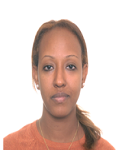
Biography:
Rahel Bahru has completed her Masters of applied science (clinical nurse specialist) in nursing at the age of 30 years from Ingram School of Nursing, McGill University. She has completed this qualitative research project as part of her nursing master’s programme and presented at nursing exploration conference in Montreal on October 2015. She is currently works at Scripps Health, San Diego, CA in cardiac catheterization lab. I have done one poster presentation and involved in other health care quality improvement projects.     Â
Abstract:
Hemodialysis patients often deal with complex lifestyle changes such as diet and fluid restrictions that may alter their physical and emotional well-being. Nurses play an important role in promoting self-management and assisting patients to cope with these changes. Purpose: To explore hemodialysis patients’ perspectives of nursing care that enables or hinders their ability to manage their illness. Methods: A qualitative descriptive design was used. Six male and three female hemodialysis patients were interviewed during their outpatient dialysis treatment at a university affiliated hospital. Result: Three major themes emerged: 1) What it means to live with chronic kidney disease 2) Managing the illness and treatment regimen, and 3) Nature of the therapeutic relationship with nurses to promote self-management. Patients’ narratives also revealed six important features of the nurse-patient relationship. Conclusion: Patients identified the nurse’s friendly demeanour and being patient-centered as care that assisted them to self-manage. These findings underscore the importance of creating a nurturing and supportive environment, and focusing on patients’ individual needs. Reflective practice may be a helpful strategy to assist the nurse to consider the interpersonal aspect of the nurse-patient relationship. The nurse’s use of motivational interviewing may help to gain the patients’ perspective and engage them in their care.
Priyanka Dhiraj Salve
Maharashtra Institute of Mental Health, India
Title: Drug compliance and psychiatric patients
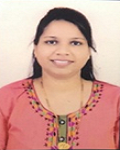
Biography:
Mrs. Priyanka Dhiraj Salve is M.Sc Nursing (Psychiatric Nursing) at Maharashtra Institute of Mental Health, Center of Excellence, Pune, India.
Abstract:
Statement of the Problem: “A Study To Assess The Effectiveness Of Self Instructional Module (Sim) On Knowledge And Attitude Of Medication Compliance Among The Care Takers Of Mentally Ill Patients In Selected Mental Hospitals”.
World Health organizes the importance of psychological well- being, defines “health is the state of complete physical, mental, social and spiritual well-being and not merely the absence of disease or infirmity”
According to World Health Organization, Mental Health includes “Subjective well-being, perceived self-efficacy, autonomy, competence, intergenerational dependence and self-actualization of one’s intellectual and emotional potential, among others”.
OBJECTIVE
1) To assess the Level of knowledge regarding medication compliances among care takers of mental ill patients in selected Mental Hospital, Pune.
2) To assess the attitude of medication compliance among care takers of mentally ill patients in selected Mental Hospital, Pune.
3) To assess the effectiveness of Self Instructional Module (SIM) on knowledge and attitude regarding medication compliance among care takers of mentally ill patients in selected mental hospital, Pune.
4) To find the association with study finding and selected demographic variables
Conclusion & Significance: Following study can be undertaken in relation to present study.
• A similar study may be replicated on large samples; there by findings can be generalized.
• The study can be undertaken in different settings and different target population such as identical samples.
• A comparative study can be done to assess effectiveness of two different self instructional modules
Stephanie Merck
Fairfield County Medical Group, P.C., USA
Title: Chronic disease and mobile technology: An innovative tool for clinicians

Biography:
Dr. Merck has been a nurse for over 40 years in a variety of settings including the acute hospital environment and private practice. She recently completed studies and successfully defended her dissertation for a PhD in nursing with University Of Phoenix School Of Advanced Studies. Actively employed within a suburban, multispecialty, internal medicine practice for the last 22 years, she provides direct care to all patients within this practice. Additionally, Dr. Merck regularly precepts Nurse Practitioner students, holds an adjunct faculty position at Yale School of Nursing, and facilitates courses in the undergraduate on-line nursing program at University of Phoenix. She enjoys her family, following several college sports team, and traveling.
Abstract:
The 21st century holds many challenges for primary care providers chronic disease management is one. Chronic disease and conditions are among the most common, costly and preventable of all health problems (Centers for Disease Control [CDC], 2016). The incidence of one chronic disease, diabetes, is expected to explode within the next five years. While preventions and education programs have documented improvement in outcomes, the success is difficult to maintain in daily life. Chronic illness requires different approaches and conversations.  The disease is managed and not cured. Much of the management of chronic illness occurs outside of the provider’s office and within the daily lives of those affected by the disease. Providers, who seek different strategies to support the patient’s self-management of their chronic illness, may improve outcomes. Incorporating the information provided by technology may improve self- management skills and lead to collaborative provider/patient conversations. Technology may provide the tool necessary to improve both self-management behaviors and outcomes. Primary Care Providers, who understand the daily struggles of those diagnosed with a chronic illness, can offer realistic strategies for an individual to develop the necessary self-management skills to manage their chronic disease.

Biography:
Transformational leadership is a style of leadership where a leader works with subordinates to identify needed change, creating a vision to guide the change through inspiration, and executing the change with committed members of a group. Emergency Departments are increasingly confronting challenges such as overcrowding, understaffing, increased waiting times, poor patient satisfaction and staff burnout. Transformational leadership can play a key role in revitalizing and assisting stressed Emergency Departments where resource limitations present real and consistent roadblocks to significant performance improvement, staff morale and motivation.
As a transformational leader, once must find ways to influence and change behavior. Integral to creating changes in the different issues in the Emergency Department is staff engagement. Due to patient-care demands and increasing institutional requirements, staff members are becoming increasingly overwhelmed by the amount of information they receive and initiatives with which they must comply. Traditionally, hospital leaders use a linear approach to communicate with staff. An example is a manager reads a policy to staff ,with the expectation that they will follow the requirements.
As hospitals become increasingly tactical in their approach to innovation, it is recognized that the top-down approach to performance improvement is ineffective. The most valuable asset in the workplace is the staff (Drucker, 1954). Their engagement and productivity can dictate the success of a project.
So, how do hospital leaders influence staff to engage in the hospital’s initiatives and facilitate change? Innovative marketing strategy as an innovative approach ED staff engagement utilizing marketing strategy as an innovative approach.
Marketing is the “process of creating, communicating, delivering, and exchanging offerings that have value to customers” and the target audience (American Marketing Association, 2017). The basic premise of marketing is to influence consumer behavior and drive change.
Abstract:
Janine Duran started her nursing career in 2007. Prior to that, she was working as an Account Executive in McCann Erickson World Group, a multinational advertising agency. She decided to move to the US, to pursue nursing and worked in SBH (St. Barnabas Hospital) as an ED nurse from 2008. In the last 4 years, she transitioned from charge nurse, nurse manager and ED nursing director.
She has a Master's degree in Nursing. She is a Certified Emergency Nurse, Certified Nurse Executive-Advance and also is an APN specializing in Adult and Geriatrics. She is also was the first RN to be sponsored by SBH to join the Clinical Quality Fellowship program of GYNHA and UHF, teaching and helping hand-picked physicians and nurses to lead innovative quality and patient-safety initiatives. She is a National Conference Speaker, focusing on topics such as "Transformational Leadership and " The Use of Innovative Marketing and Non-Traditional Strategies/media in the healthcare setting."
Patricia Zebrook
Florida Southwestern State College, USA
Title: Experiences moving to a concept-based curriculum in an associates of science in nursing program

Biography:
Patricia has completed her Bachelor’s degree in Nursing from the University of Wisconsin, Eau Claire and her Masters degree from the University of Alabama, Tuscaloosa.
She is a full-time faculty member at Florida Southwestern State College for the past 7 years. She has published 5 papers in reputed journals related to quality in nursing. She was involved in the development of the first and second semesters of the didactic and online Concept-based curriculum for her school of nursing.
Abstract:
Â
The educational shift from abstract theory and knowledge towards conceptual knowledge and critical reasoning led our nursing faculty to adopt the Concept-Based Curriculum approach in the fall of 2016. This presentation will describe the preparation for the change, experiences noted during a full cycle (4 semesters) of nursing education utilizing this process, and various evaluation methodologies.
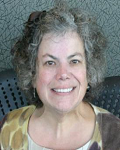
Biography:
Dr Martin has been in nursing since 1974 and worked as an executive leader in home health, hospice and consulting until 2004 when she moved into higher education leadership. She has served as Dean of Nursing at four institutions and continues to teach in graduate programs for several universities. She is a frequent lecturer and workshop leader on success strategies, living a life of purpose and passion, and overcoming the challenges of the healthcare workplace. She was a contributing author to Mastering the Art of Success by Jack Canfield which was a New York Times bestseller in 2017. She is now the President of her own nursing company, The Successful Nurse where she consults with nursing programs and provides online programs for nurses. Additionally Diann is a certified Aromatherapist and Reiki Master Trainer.
Abstract:
Given the increasing complexity of care, the aging of the population, and rising costs; nursing is a challenging profession. To be successful and fulfilled, nurses need to be deliberate in identifying their intentions and passions and chart their future course with goals and actions that flow in this direction. In this workshop you will identify and prioritize your topic five ingredients for an ideal life and career and begin to design a plan to manifest these for yourself. Success strategies such as continued learning, forming a support group (tribe), practicing radical self-care and supporting others will be discussed. Success is a personally defined outcome but many people spend little to no time creating their plans.
Hank Drummond
Cross Country Healthcare, USA
Title: Considering Contingent Labor to Maintain efficiency, cost saving and patient quality

Biography:
Drummond holds the position of Chief Clinical Officer within the Cross Country Healthcare. His experience includes more than 25 years’ of directly applicable healthcare administration and a broad base of exceptional management expertise. His past leadership roles include executive and director level positions as Chief Nursing Officer, Nursing Administrator and Nurse Executive. He has also served as an University Instructor. Mr. Drummond's proficiency in balancing patient care with business efficiencies provides healthcare providers with the added benefit of an innovative approach with cutting edge technology solutions to meet the daily demands of healthcare delivery in a rapid changing environment.
He is considered an expert in his field and is often asked to speak on various topics related to Nursing labor and Quality topics to groups throughout the USA. He serves on numerous Boards and Advisory Boards giving advice and recommendations to meet the needs of patients to ensure safety.
Abstract:
The problem would be the misconceptions that a Contingent Labor Force does not delivery quality care.
1. Contingent Labor cannot deliver quality (research has shown and reported that Contingent Labor force has a positive impact on quality outcomes, patient satisfaction, staff satisfaction, family satisfaction, physician satisfaction).
2. Contingent Labor does not maintain efficiency. The results would indicate the right staff at the right bedside, at the right time, delivering the right skill set brings efficiency to the unit, the nursing department, and the organization as a whole.
3. Contingent Labor does not deliver cost savings. Again, using contingent labor brings cost savings by handling vacancies and by providing staff so units do not have to be closed, patents to do not have to be relocated/diverted to another facility, procedures do not have to be cancelled or delayed. Having the correct staffing patterns will decrease amount of turnover in staff, increase staff and physician morale.
4. Contingent Labor does not impact Patient satisfaction and quality scores. However, the right mix of staff increase quality scores and has a positive impact on outcomes and delivers measurable results.
Tawa B. Ibikunle-Salami
Indiana University Northwest School of Nursing, USA
Title: Strategies to improve parental uptake of Human Papillomavirus Vaccine

Biography:
Dr. Tawa Ibikunle-Salami completed the MSN with Family Nurse Practitioner track at age 44 years from Indiana Wesleyan University and the DNP at age 50 years from Walden University due to raising a family and working full time as a nurse to provide for her college education. Currently serving as a Clinical Assistant Professor, coordinator of a family nurse practitioner program and as director of the campus health and wellness center. Her DNP dissertation was published and as assisted in writing different policies at the hospital organizational level.
Abstract:
Human Papillomavirus (HPV) is a global health issue, transmitted sexually and affects both genders. Literature review shows approximately over 80 million people affected, in the United States with 14 million people newly affected yearly. Lack of parental education and unwillingness of provider to promote the HPV vaccine is the main criteria for the reduction in the HPV vaccine uptake. The Centers for Disease Control and Prevention (CDC) indicates that teens and younger adults under age 26 are at risk, as a result, it is significant to initiate the HPV series before sexual exposure as early as 9 years old. Multiple literature reviews indicate the importance of provider and parental education in relation to the uptake of the vaccine. The purpose of this research study was to develop evidence-based strategies that will improve the parental uptake of the HPV for children ages 9-17 years. The research goals focused on Provider education, provider means of communication, parental knowledge, beliefs, and attitudes. The HPV vaccine availability as well as the cost of the vaccine, and other available resources to the patient and their family such as clinic distance and means of transportation. The researcher will look into all available federal and global resources in ensuring the proper implementation of the identified strategies. Successful implementation of the listed goals will afford the provider and the parents the knowledge needed to improve the HPV uptake and avoid missing opportunities. Incorporation of the identified strategies into clinical practice will lead to social change by improving HPV knowledge, awareness, and increase its uptake, thereby, reducing the effects of HPV and its sequelae, leading to cost-effective care and holistic family wellness promotion.

Biography:
Dr. Mabolo completed her Doctor in Nursing Practice from American Sentinel University in Aurora, Colorado with a focus on Executive leadership and her Master’s in nursing from Duke University School of Nursing. She is currently the director of a 30 bed heart failure unit at Moses Cone Memorial Hospital, a 500 bed acute care hospital that is a part of a 6 hospital enterprise in southeastern North Carolina. She has presented numerous evidence based posters and podium presentations to various national nursing conferences including the American Nurses association, American Association of Critical Care Nurses and the North Carolina Nurses Association.
Abstract:
Description:
Indwelling Urinary catheters are commonly used for heart failure inpatients to support strict intake and output monitoring related to IV diuretic administrations.
In our 30 bed heart failure unit, high indwelling catheter utilization and high Foley days led to increased catheter acquired urinary tract infection (CAUTI). As we drilled down the problem, we identified inconsistent use of the nurse driven urinary catheter protocol and inaccurate documentation of I & O.
These triggers prompted our team to use the IOWA model to identify best practices in CAUTI prevention.
Methods/Materials:
Using the IOWA model, the team reviewed literature for best practice strategies. Baseline data on I & O documentation and catheter care practices were collected.
Staff were re-educated on the urinary catheter guidelines, proper Peri and Foley care, use of nurse driven protocol to discontinue Foley catheter and I&O documentation through daily huddle messages and one on one staff education.
Practice was changed in Intake and Output documentation of catheter output to every 4 hours; Foley/Peri care annual competency was established and the team selected a Nurse tech and a nurse to be CAUTI champions.
Results:
The unit CAUTI rate in 2013 was 3.16 with 7 CAUTI’s and 949 Foley utilization days.
After staff re-education and practice change in 2014, the CAUTI rate decreased to 1.22 with 1 CAUTI and 807 in Foley utilization days.
In 2015 the unit CAUTI rate continued to decline despite a slight increase in Foley utilization of 924 days.
By 2016, the unit continued to be CAUTI free and for 2017, they remain CAUTI free with 598 days of Foley utilization.
Conclusion:
This evidence based project positively impacted practice by promoting early removal of Foley catheters and accurate documentation of Intake and output. The results demonstrate a dramatic and consistent decrease in CAUTI rates, as well as a decrease in catheter days.
Adherence to Protocol driven care and commitment to maintaining increased staff awareness has dramatically reduced the incidence of CAUTI on this department resulting in the unit’s achievement of 3 years CAUTI free.
Elizabeth S. Guernsey
UNC Health Care, USA
Title: Organizational factors that enhance and inhibit organizational innovation

Biography:
Elizabeth S. Guernsey is a nurse educator and most recently assistant director of nursing with expertise in creating curriculum through utilization of current evidence based learning research for both large health care systems and university settings. I have been particularly successful cultivating a productive and positive learning environment for a wide diversity of learners. Most recently, she was a Nursing Supervisor and Charge Nurse in the Waterloo, Iowa area. During this time, she provided direct patient care, as well as leadership and guidance for the clinical nursing staff.
Specialties: Nursing leadership and staff development, EMR training, curriculum designs, delivery and evaluation, and education consultation.
Abstract:
Organizations that enhance innovation create a culture of ongoing staff development, learning and creativity. Learning is shared and encouraged throughout the organization. Studies have shown a direct relationship between organizational learning, innovation and enhanced business improvement (Jimenez Jimenez, 2011). In addition, research indicates that organizational learning, “allows the company to develop capabilities that enhance innovation and that innovation is what positively affects performance” (Jimenez Jimenez, 2011, p. 409).
The factors that may contribute or prohibit enhanced adoption of an innovative culture of an organization are size, age, industry and environmental instability (Jimenez Jimenez, 2011). Research indicates that larger, mature companies have greater resources and funding to support organizational learning and innovative efforts (Jimenez Jimenez, 2011). Industry variability and diverse internal cultures have been shown to impact innovation. The connection between innovation and organizational learning has been shown to impact the agility of an organization to navigate and sustain during times of turbulent environments and economic down-turns (Jimenez Jimenez, 2011). It has been found that in order to succeed, “in Schumpeterian environments organizations must be able to cope with increasing complexity and high-speed change” (Jimenez Jimenez, 2011, p. 410).
Arthur Dominguez Jr.
Sierra Vista Regional Medical Center, USA
Title: Decreasing Primary-Care-Related Emergency Department Visits in the Hispanic Population Using Patient Navigators
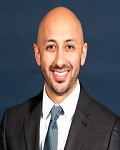
Biography:
Dr. Arthur Dominguez is a Chief Nursing Officer at Sierra Vista Regional Medical Centre, California, USA. He is previously worked as an Assistant Chief Nursing Officer at Desert Regional Medical Centre from March 2015 – September 2017. He studied Master of Science in Nursing and Doctor of Nursing Practice (DNP) at Walden University, Minnesota, USA.
Abstract:
Primary-care-related emergency department (PCR-ED) visits by Hispanic patients enrolled in a not-for-profit Medi-Cal and Medicare health plan resulted in longer wait times in the emergency department (ED) at a regional medical center in Southern California. This congestion decreased access for those with true emergencies, created capacity issues, increased ED length of stay, and resulted in potential safety risks. This project focused on decreasing PCR-ED visits in the Hispanic population using patient navigators in Southern California. Applying the health belief model and Lippitt’s theory of change, this doctoral project involved the creation and implementation of a culturally appropriate, population-specific patient navigator model for the Hispanic population. Evaluation of outcomes was accomplished using electronic health record (EHR) results, which demonstrated a reduction of PCR-ED visits and revisits. The project exceeded the goal of 10% reduction in PCR-ED visits and revisits in the target population and resulted in a 14.31% reduction of PCR-ED visits and revisits within 1 month of implementation. Emergency Severity Index levels, wait time associated with each Emergency Severity Index level, and visits of the targeted Hispanic population enrolled in the health plan were analyzed to evaluate the success of the program. This project may lead to improvements in nursing practice and positive social change by supporting population health management and continuum of care to a primary care physician through safe and efficient patient navigation to treatment and care.
Joanne Spataro
Pisa University School of Medicine, Italy
Title: Teaching the CanMEDS Communicator Role through English for Nurses: an Italian pilot course
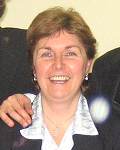
Biography:
Joanne Spataro is a Canadian EFL mother-tongue professor and teacher trainer at the University of Pisa, Italy. She started teaching Academic Writing Courses at Maryland University, USA. She is currently teaching Scientific English Courses for the resident doctors of the Medical Specialization Schools and also for the Nursing Students of the University of Pisa. Within the Medicine Department of Pisa University, her research is focused on implementing a patient-oriented communication both in the medical and nursing field by means of teaching English for Medical Purposes. This has brought her to work in several medical departments of Pisa University, integrating this type of research with the Canadian CanMeds Physician Competency Framework with particular reference to the Role of Physicians and Healthcare Professsionals as Communicators.
Abstract:
Despite wide agreement about the importance of effective communication in nursing education there is little evidence of patient-oriented communication courses in Nursing Master’s Degree programs in Italy. So, how do nurse practitioners learn to master effective communication skills? What is being done within the curriculum design for nursing students? From a pedagogical standpoint, international health communication research has helped increase health educators’ awareness, contributed to building national health policies, provided theoretically driven work, and created textbooks in nursing communication skills. Nevertheless, in Italy very little attention is given to the training of communication skills within the master degree nursing curriculum. This paper will therefore describe the outcomes of a pilot course in patient-oriented communication skills in accordance with the CanMEDS Communicator Role while teaching English for Nurses. It is the writers' belief that English for Nurses should be taught from the holistic perspective of the nursing profession and healthcare communication first and foremost, while reinforcing vocabulary acquisition, grammar and structure secondly.
Yoshifumi Nishida
National Institute of Advanced Industrial Science and Technology, Japan
Title: Adaptive Nursing by AI/IoTâ€Based Individualized Monitoring: Longitudinal Monitoring of Elderly Gait Change at Nursing Home and Ordinary Home
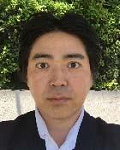
Biography:
Yoshifumi Nishida is a Team Leader of Living Intelligence Research Team at the Artificial Intelligence Research Center (AIRC) of the National Institute of Advanced Industrial Science and Technology (AIST) in Japan. He received a PhD from the Graduate School of Mechanical Engineering, the University of Tokyo in 1998. In 1998, he joined Intelligent System Division of Electrotechnical Laboratory at AIST of the ministry of international trade and industry (MITI), Japan. In 2001, he joined Digital Human Laboratory. In 2003, he joined the Digital Human Research Center (DHRC) of AIST. He is also a Prime Senior Research Scientist at AIST from 2013. His research interests include human behavior sensing, human behavior modeling, injury prevention engineering, and social participation support.
Abstract:
Statement of the Problem: cognitive and physical capabilities change of elderly are diversified. Such diversity in the change needs personalized support based on individualized assessment. Conventionally, sensing technology for assessment have been proposed. However, from the viewpoint of feasibility of longitudinal monitoring and easiness of operation, wearable sensors have drawbacks that users have to exchange/recharge a battery routinely and sensors embedded in living spaces also have difficulty in personal identification if multiple people live in target living space. Methodology & Theoretical Orientation: As new monitoring systems for detecting elderly gait change based on the recent Internet of Things (IoT) and artificial technology, the authors developed 1) a buttery-less shoe-shaped wearable sensor, 2) RGB-D cameras with face and posture recognition, and 3) handrail-shaped sensor as shown in Fig. 1. To evaluate effectiveness of them, we conducted experiments in a nursing home, and an ordinary home. The results of experiments using buttery-less shoe-shaped wearable sensor shows that the error of elderly location is within 1 m. The handrail-shaped sensor was evaluated for over two years in the ordinary home where a 88 years old woman lives. The results indicate that it could monitor not only longitudinal gait data but abnormal gait such as stumbling. The RGB-D technology was evaluated in the nursing home that has eight elderly adults (79 to 104 years old) and seven nursing stuffs. The error rate of person identification is within 2.9% and the error rate of walking speed is within 4.9%. Conclusion & Significance: The above experimental results indicates that the three kinds of systems are promising methods for monitoring individual elderly in actual living spaces such as a nursing home and an ordinary home in terms of easiness of operation and accuracy of data.
Lyne Chamberlain
Seminole State College’s, USA
Title: Perceived Social Support and Self-Care in Hospitalized Heart Failure Patients

Biography:
Lyne Chamberlain was a Clinical Nurse Specialist with expertise in chronic heart failure patients and a passion for facilitating self-care when this study was conceived. She has presented at numerous national conventions for the American Association of Heart Failure Nurses and the American Association of Critical-Care Nurses. Lyne has also published several articles related to heart failure self-care. Currently Dr. Chamberlain is the Program Manager and a Professor of Nursing in Central Florida’s Seminole State College’s bachelors program
Abstract:
Statement of Problem: Self-care is recommended in heart failure (HF) management and to reduce hospitalizations, yet only one study has demonstrated improved patient outcomes with adequate self-care. This study evaluated perceived social support and self-care in hospitalized HF patients compared with community dwelling HF patients.
Methodology and Theoretical Orientation: The medical outcomes study of social support (MOS-SS) and the self-care of heart failure index (SCHFI) were the key measurement instruments for this multisite descriptive study. Multiple regression and two-sample t tests for unequal variances were used to analyze the data from a convenience sample of 121 hospitalized HF patients and a comparative study of 211 community-dwelling HF patients. Theoretical frameworks were the Self-Care of HF Theory and the Stress-Buffering Model of the Social Support Theory.
Findings: Hospitalized HF patients had significantly lower self-care maintenance scores and perceived social support than community-dwelling HF patients. Perceived social support was associated only with self-care confidence, and self-care confidence was associated with self-care maintenance and self-care management. 25% of hospitalized study candidates had cognitive impairment compared with less than 6% of community-dwelling patients.
Conclusion and Significance: Community-dwelling HF patients had better self-care skills than hospitalized HF patients. Additional research is needed to determine the best strategies for improving self-care or reasonable substitutes in these patients. Additional research is also needed to evaluate cognitive impairment across the spectrum of HF patients, as this impairs self-care success.
Jacinta Margaret Anne I. Juta
University of Santo Tomas, Philippines
Title: A Structural Equation Model of Factors Influencing the Quality of Life Among Incarcerated Filipino Older Adults
Biography:
Jacinta Margaret Anne I. Juta is affiliated to College of Nursing, University of Santo Tomas, España Boulevard, Manila, Philippines
Abstract:
Statement of the Problem: Among older adults, incarceration is challenging because of their complex health and social care needs (Maschi, Viola & Morgen, 2013); inadequate social support (Asberg & Renk, 2014); diminished contact with family and friends outside (Crossman, 2017); and social isolation (Kang & Ridgway, 1996; Matt & Dean, 1993). Hence, incarcerated older adults are likely to feel lonely, jeopardizing their mental well-being and increasing self-destruction (Khorshid, Eser, Zaybak, Yapucu, Arslan & Cinar, 2004) and depression (ArslantaÅŸ, Adana, Abacigil, Kayar & Acar, 2015). Thus, with these circumstances, the quality of life (Qol) of incarcerated older adults is greatly affected. Although Qol has been well studied among the general population, Qol among incarcerated older adults remains less explored. This study aims to examine the relationships between and among factors such as social engagement, depression, loneliness and social support and quality of life of incarcerated Filipino older adults.
Methodology & Theoretical Orientation: Accordingly, this descriptive correlational study draws on the power of structural equation modelling (SEM) to analyze data from 315 purposively selected incarcerated Filipino older adults.
Findings: The emerging model suggests that social engagement directly influences depression (β= -.267, p= <.01) and social support (β= .619, p=<.01). Social support, for its part, has a direct influence on loneliness (β= -.342, p=<.01) and quality of life (β= .217, p=<.01). Further, loneliness positively influences depression (β= .416, p=<.01). Lastly, the results also showed that decreased quality of life (β= -.292, p=<.01) is more likely to occur with incarcerated older adults who are depressed.
Conclusion: This study highlights that social engagement, social support, loneliness and depression predict quality of life among incarcerated older adults. But despite being incarcerated, older adults can still achieve quality of life by strengthening social support systems and social engagement as well as decreasing levels of loneliness and depression.
Keywords: Incarcerated, older adults, Filipino, social engagement, depression, loneliness, social support, quality of lifetime
Rifat Ara Adity
Northern Arizona University, USA
Title: The effect of prior shortening on residual force enhancement after stretch

Biography:
Dr. Rifat ara Adity is Graduate Teaching Assistant at Northern Arizona University, USA. She has completed her Master's degree in Biology/Biological Sciences at Northern Arizona University, USA from 2014 – 2016
Abstract:
The mechanism of muscle contraction was first explained by the sliding filament theory However, several muscle properties are poorly explained by this theory such as: 1) enhancement of force with stretch; and 2) depression of force with shortening. Recently, a new theory of muscle contraction, the “winding filament” hypothesis, has been suggested. This hypothesis explains how titin acts in conjunction with sliding filament theory. This theory resolves many unexplained muscle properties. If activation of a passive elastic element is responsible for residual force enhancement, then shortening prior to stretch should reduce or eliminate the extra force upon stretch. Edman and others have performed experiments in which active muscles were shortened prior to stretch. However, they observed no reduction in residual force enhancement due to pre-shortening. They concluded that, if an elastic element is formed in muscle during activation, it is not slackened by shortening. Later studies showed that, as the delay between shortening and stretch increased, the effect of shortening on force enhancement decreased. The purpose of this study was to evaluate the effect of the delay between shortening and stretching on mouse muscles. Muscles were placed initially on the descending limb of the force-length relationship. The muscles were first shortened and then stretched at a fixed amplitude and speed (10% fiber length, and at 40% fiber length/s), either immediately following shortening, or 100, 200, 300, 400, or 500 ms following shortening. As the interval between shortening and stretch increased, residual force enhancement increased. The observations are consistent with the idea of a passive structural elastic element in vertebrate skeletal muscle that develops upon muscle activation. Further this element has a time-dependent mechanism that is dependent on cross bridge cycling. These findings are consistent with the predictions of the winding filament hypothesis.
Teus Brand
Academic Medical Center Amsterdam & Arbo Unie, Netherlands
Title: Scientific evidence about adverse effects of working conditions must be used in counseling before conception and during early pregnancy
Biography:
Teus Brand is an occupational physician working in The Netherlands. He developed expertise in finding and evaluating literature on the adverse effects of working conditions on pregnancy outcomes and making the information available for health professionals in every day practice. Therefore a Dutch guideline on this topic has been written in 2007 as well as a part of a publication of the Health Council of The Netherlands on preconception care. Recently the guideline has been updated. And in the new Preconception Indication List, the information on the effects of preconceptional exposure of hazardous working conditions will soon become available to health professionals involved in obstetric care such as general practitioners, midwifes, gynecologists and occupational physicians.
Abstract:
Introduction / aim: To find and use scientific evidence about the influence of working conditions on reproductive outcomes for practical use in a guideline for occupational and a website for pregnant women, parents to be, health care professionals and policy makers.
Method: We searched the literature for evidence concerning the effects of working conditions before, and during pregnancy on pregnancy outcome and development during early childhood. The working conditions with effects on pregnancy outcome were summarized in six groups: physically or mentally heavy work, shift work, chemical substances, physical factors (like noise) and infections. We looked at the following pregnancy outcomes spontaneous abortions, preterm birth, low birth weight, hypertension and congenital malformations and developmental problems at early school age.
Use of evidence: A practical guideline1 was made for occupational physicians in The Netherlands (also translated in English) and was recently updated. It can be used by physicians in advising pregnant women and women breastfeeding their child. In another report “Preconception care: a good beginning"2, the chapter about working conditions underlines the effect of exposure before conception on the embryo and fetus. In the third place the evidence was used on websites3,4 for parents to be or pregnant women and can be used for preventive measures regarding working conditions preconception ally or during pregnancy.
Conclusion: There is growing evidence that working conditions before and during pregnancy can increase the number and severity of pregnancy complications. There is also evidence that early intervention can prevent this increase of pregnancy complications. The available evidence has been used for a guideline for occupational physicians and on a website for parents to be in order to take preventive measures. A summary of the evidence will be presented together with examples how to use the evidence in counselling before conception and during early pregnancy.
Samira Obeid
The Max Stern Yezreel Valley College, Israel
Title: The social capital of Israeli Jewish and Arab nursing students

Biography:
Dr. Samira Obeid, has received her Ph.D. (2012) and MPH (2005) in public health from Haifa University specializing in Health Promotion. She obtained her first degree, BSc in Nursing, from Hadassah School of Nursing at The Hebrew University. Her research (MPH and PhD) focused on healthy and unhealthy behaviours, the social determents and the social capital of the Arab community. Areas of interest for postdoc research: 1. Social capital determents in minorities and health behaviors and indicators.2. Planning, operation and evaluation of health promotion programs among several target groups. 3. Cultural adaptation for minorities.
Abstract:
Israeli society is made up of many different groups. Jews comprise the majority population, when Arabs are the minority. In recent years, in light of political tension situations between Jews and Arabs, forms of intolerance appeared in wide range of actions from avoidance to hate speech in personal levels or via the social media among nursing students. This research aimed to evaluate the relationship between Arabs and Jews nursing students using the social capital components: social involvement, reciprocity, support and trust. High levels of social capital can facilitate coordination and cooperation for mutual benefit of the nursing students.
Methods: Quantitative study using a questionnaire based on the ESS social capital questionnaire. Self-administered online questionnaire via Google Docs software sent to all first year students via email.
Results: 228 nursing students participated in the research most of them (88%) are females, 47% Jews and 53% Arabs. The results indicate low social involvement between Arabs and Jews nursing students, students reported higher trust levels in same group students than in the other group (Arabs and Jews), high levels of reciprocity in the two groups was found and high levels of support for the same group students.
Conclusions: nursing students Arab and Jews live and learn in multicultural society. They study together for four years, and then they will work together and with people from different ethnicities and deferent cultures. It is important and efficient to educate and work with nursing students to raise their awareness for the important of coordinatio and cooperation for personal andprofessional benefits.
Puangitp Chaiphibalsarisdi
Saint Louis College, Thailand
Title: Evaluation of master nursing administration curriculum, version 2013, Saint Louis College, Thailand
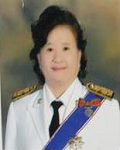
Biography:
Puangtip Chaiphibalsarisdi is Associate Professor, Chair of Master of Nursing Science Program in Nursing Administration, Faculty of Nursing, Saint Louis College, Thailand. She has completed her Ph.D. in Nursing Science AT University of Illinois at Chicago (U.I.C.), USA from Sept 1986-June 1990.
Abstract:
This mixed method research with CIPP model approach, aimed to evaluate master Nursing Administration Curriculum, version 2013, Saint Louis College, Thailand. The 33 sample were,
1) Policy administrator, program administrators, 2) nursing directors, 3) alumni, 4) teachers, 5) students’ supervisors, 6) students’ colleagues, and 7) students
There were 4 parts of measurement that validated by 3 experts for evaluating context, input, process and product.
The results of study, the administrators confirmed the policy of higher education affect the needed program, and had designed the revision program must followed the changing of service system with IT facilitate. Moreover, there is a plan for resources according to the education accreditation. For results of the input, the students satisfied the curriculum, teachers and the environment at the high levels. Especially for the field study at private and international settings. In the process from the in-depth interviews of the teachers, they reflect the variety of the thesis advisory means and methods.
The part of product, though the students perceived their professional responsibility at very good levels, but their
Supervisors and colleague expected the more competencies at 0.05 Level.
The suggestions for the revision curriculum include; 1) bilingual nursing administration curriculum and/or short terms of 1-4 months training for nursing administration, 2) the program must consistency with the changing system services, 3) supporting IT and learning facilitation, and 4) development of faculty and staff of the graduated office.
Keywords: Curriculum evaluation, nursing administration program, competency of nursing administration
Vasiliki Douglas
College of New Caledonia, Canada
Title: Building Cultural Safety through mutual respect: Examples from Indigenous populations and Institutions in Canada
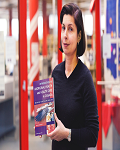
Biography:
Vasiliki Douglas has completed her undergraduate Nursing education at the University of British Columbia, undergraduate and graduate degrees in Classics and History at McGill University and a doctorate in Nursing and Anthropology at the University of Alberta. Her postdoctoral research was at the University of Northern British Columbia. She has published extensively in peer reviewed journals in Nursing, Anthropology and Arctic Studies. She is the author of the first Nursing textbook in Canada to focus on Aboriginal health and cultural safety.
Abstract:
Cultural Safety famously emerged from a cultural template informed by the physical example of Sharps Safety. Practitioners who practice Cultural Safety expect to constantly self-monitor their behaviour and attitudes to avoid creating a cultural unsafe space for patients.
However, health care practitioners must also remain cognizant of their own professional cultural space – one that is bounded by legal and professional standards. In other words, Cultural Safety cuts both ways. Some patient’s demands and requirements may be culturally mediated, but mutual cultural safety requires practitioners to create a space that both patients and practitioners can reside in without violating either cultural rules. Examples from culturally appropriate birthing centres in the Canadian Arctic can be used to construct a model in which we, as professionals can act as mediators between the health care system and patients' own cultural space – creating a common ground in which a culturally safety and professional integrity can both thrive.
Hope R. Farquharson
National University, USA
Title: Maternal characteristics and gestational weight gain patterns

Biography:
Hope Farquharson received her PhD in Nursing from the University of San Diego in 2014. She has been a registered for 32 years and has been in academia for over 15 years. She has been Director of Nursing for various nursing programs in California. Currently she is an Assistant Professor and Interim Assistant Chair/Director of the undergraduate and graduate nursing programs at National University. Her research interests include women’s Health, cancer of the cervix, colon, and breast. She works with community partners in San Diego to provide health care to vulnerable populations including the homeless, veterans, substance abusers, women, children, and people with mental health disorders.
Abstract:
Background:
Healthcare providers are critical facilitators to address the Maternal Infant Child Health (MICH-13) Healthy People 2020 objective of increasing the proportion of mothers who stay within the recommended weight gain parameters during their pregnancies1 and are tasked with developing substantial interventions to decrease the prevalence of adverse outcomes from inappropriate GWG that can lead to ill effects.2 The purpose of this study was to examine gestational weight gain (GWG) patterns among a group of racially, ethnically, economically diverse women as it related to the IOM Guidelines.
Methods
This retrospective cross-sectional study from a sample of women (N = 4,500) who gave birth between January 1, 2011 and December 31, 2012 in Northern San Diego County. There were 1,397 mothers who delivered singleton babies were assessed; 621 cases were randomly selected and 320 met the inclusion criteria. Information on maternal socio-demographic were obtained from the electronic medical record.
Results
The sample skewed towards younger women; approximately 58% were 29 years of age or less. Overall, almost half (43%) of the births were to women who identified themselves as Latina. Over 48% of women received MediCal. Seventy-one women (25%) reported Spanish as their primary language. More Latina women were receiving MediCal (p<0.001), saw a CNW rather than a physician (p<0.001), and were single (p<0.001). Across racial/ethnic categories there were no significant differences in age or weight gain. Almost half of the participants were either overweight or obese pre-pregnant. More Than two-thirds of the sample (69.1%) gained weight outside the recommend range. Pre-pregnancy BMI (Fisher’s X2 10.4; p=.03) significantly correlated to GWG within Guidelines. The association of having a certified nurse midwife and staying within Guidelines demonstrated an interesting trend toward statistical significance (p=.09). There was a trending association among those women who gained weight above the guidelines and cesarean delivery (p=0.07) and those women who gained weight Outside the guidelines had babies weighing significantly more at birth (p<0.001).
Conclusions
Women are not only not adhering to the 2009 IOM GWG recommendations but began pregnancy outside of a recommended weight with overweight (35.8%) and obese (14.4%). More studies are needed to assist in the development of better strategies to help healthcare providers motivate women to gain weight within IOM GWG guidelines.
Biography:
Aviva Alagem-Mizrahi is Registered Nurse at School of nursing, Sheba Medical Center during 1985-1989, Midwifery course at Asaf Harofe Medical Center during 1989-1990, Bachelor of Arts (BA) in health services at New England College, Master of Public Administration in healthcare at Clark University, Course in clinical teaching in nursing at Haifa University during 2000-2001 and nursing homes management course–Bar Ilan University during 2010-2012.
Abstract:
Background:
Malnutrition in the Hospitalized Patients is one of the complications that occur during hospitalization. It occurs at the rate of 30-40% in the hospitalized patients. The most important point in preventing this occurrence is to identify these patients, and the patients who are at a high risk to develop malnutrition, and to provide them with the proper nutrition needs. Their nutrition needs can be met as oral nutrition, enteral feeding tube, or through the vein parenteral nutrition. The nurse who attends the patient, and who sees and knows the patient needs, has a very important role in identifying the nutrition status of the patient, and in the treatment of the malnourished patient. From the month of May till the month of October, 2017, one hundred questionnaires were handed out to nurses, in hospital wards, in Sheba medical center. The questions in the distributed questionnaires were geared towards identifying the nurse’s knowledge and attitude in the perception of nutrition.
The Goals of the Study:
To check the attitude of the nurses to nutrition, and their involvement in the treatment of the malnourished patient .and to understand the gaps in the nurses treatment
The Way the Nurse sees her Roll in the treatment of The Malnourished Patient:
To identify the high risk patient for malnutrition, as well as the patient who is already malnourished, and to ask for consultation and proper treatment.
In order to provide the nutritional services, we need to consider the followings:
The availability of trained nurses, and the awareness of the high risk patient for malnutrition. ,Follow-up on nutrition assessment., Feeding the patient according to the availability of the attending nurse, and according to the head nurse policy.
Barriers in the nutrition treatment:
The availability of the attending nurse to do the score MUST on the first 8 hours of hospitalization .The ability to choose the right diet to the right patient, and to verify that the patient gets this meal .The different procedures and sickness during hospitalization, such as an operation, CT scan, depression, pain, stress.
Data Collected from the Questionnaires:
Female nurses – 71% , Male nurses – 29%
Nurses with academic degrees – 91%
Nurses with specialized training – 52%
Head nurses – 18%
93% of the nurses think that the MUST score is the most important ,but not pay attention to feeding, weight the patient , documenting the amount of food the patient eat ect .Only 50% of the nurses thought that pleasant environment is important to the patient when they eating.
Only 43% of the nurses thought that they should be involved in the nutrition status .Most of them can not estimate the percentage of malnourish patient .they do know the importance of food to recovery from illness
.29% of them does not feed at all, 18% feed every day, feeding can be on the 3 ways .The barriers in nutrition are connected to : knowledge attention, not talking and discussing nutrition subject.- 50%.:The need to professional person in this field such as dietitian or doctor. Stress pressure and no time to the nurse for spending in nutrition's patient.
Summery-
This survey helped me to build a program for nurses to this new year, also to think about the next research to help nurses to give the best treatment to their patient.
Clair Zawada
Birmingham City University, UK
Title: Bringing students together with Inter-Professional Learning (IPL)
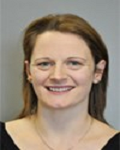
Biography:
Clair is the School Academic Lead for Curriculum Design and Development. Clair work on projects and innovations across the School of Health Sciences and the wider Faculty of Health, Education & Life Sciences. Clair teaches predominantly on the BSc (Hons) Radiotherapy programme, but also teaches sessions relating to academic and professional practice on the BSc (Hons) Diagnostic Radiography and BSc (Hons) Ultrasound programmes. The radiography disciplines are very different, but share many elements relating to patient care and professional regulation. Clair is the Personal Tutor for Radiotherapy students who are placed at New Cross Hospital in Wolverhampton, and sees them regularly to offer pastoral support and discuss their progress, both in their academic studies and in their clinical placement. Clair is involved in research, particularly the student experience, student engagement and student belonging within Higher Education and is completing her doctorate studies within this area.
Abstract:
The Faculty of Health, Education & Life Sciences recently hosted their 2nd Interprofessional Learning (IPL) conference, designed to enable students and staff to learn with and from each other. The conference runs across a nominated week, and programme teams from across the Faculty offer sessions that are delivered to students within their curriculum, but may be of interest to staff / students from other disciplines. All students and staff within the Faculty are able to register for as many sessions as they would like to attend.
The Faculty provides a wide range of courses, such as Nursing, Midwifery, Radiography, Social Work, Medical Ultrasound, Sports Sciences and Teacher Training. This enables a variety of sessions to be offered, such as ‘tackling homophobia in children’, ‘recognising and reacting to the choking child’, ‘have a go at laparoscopy’, understanding an ECG’, ‘Yoga’ and bringing down a hanging body’.
Each session is open to all within the Faculty. For students this enables interprofessional interaction and the opportunity for learning from a different perspective. Students can learn about the professional background of the session provider, and appreciate the role and expertise of different professional groups. Staff have the opportunity to network, experience different teaching sessions and gain ideas for curriculum development and inter-Faculty working.
This paper will describe the IPL conference, the logistics of organisation and how it is embedded into the timetables. Evaluations from staff and students will be discussed, as well as the lessons that have been learned and changes that will be made and taken forward.
The conference has the potential to offer students an extra-curricular learning experience and an increased sense of belonging to the wider Faculty. Students experience a diversity of backgrounds in attending the IPL conference, which increases satisfaction from the additional opportunities made available.
Kerstin Frändin
Göteborg University and Karolinska Institute, Sweden
Title: Outcome and cost-effectiveness of a community-based, individually tailored six-months physical activity intervention – a randomized, controlled, clinical trial
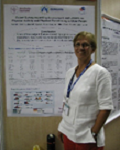
Biography:
Kerstin Frändin has her expertise in physical activity and functional performance in elderly people. She has taken an active part in the multi-professional population studies on 70-year-olds in Göteborg, Sweden, where 70-year-olds are being followed over time. She has been involved in two EU-projects on physical activity and ageing and has supervised five physiotherapists to dissertation. She has been a senior lecturer at both Göteborg University and Karolinska Institute in Stockholm. She has 48 scientific publications and is currently a senior researcher at Göteborg University.
Abstract:
Many elderly people are becoming less physically active. The aim was to describe the effects of individually tailored training advice and activities, based on physiotherapy evaluation, according to the concept “Fitness check-up”, on physical activity patterns and physical performance in inactive elderly persons, living in their private homes. A second aim was to examine the cost-effectiveness of “Fitness check-up” compared to usual care (i.e. no support to physical activity).
Fifty-seven persons over 75 years, with a low physical activity level, were randomized to either Intervention or Control Group. Endurance, balance confidence, physical activity level, social and complex daily activities and quality of life were tested before and after the six months long intervention period. Training took place in a “House-of-Health” setting. Also different kinds of social interaction, lectures and cultural activities were offered. At follow up, the IG showed significantly better results regarding endurance, activity level and falls efficacy compared to the CG. The intervention may have had an impact on health care use, but at the cost level in the study it was not effective.
Conclusion: The results of the study suggest that “Fitness check-up” connected to a House of Health setting can support elderly inactive persons to exercise regularly, leading to improved physical performance but also to the benefits of a social and intellectual meeting point. Best design, considering costs and whether the participation should be time-limited or continuous, remains to be studied.
Beverley Brathwaite
University of Hertfordshire, UK
Title: The British Black Caribbean nurse: Postcolonial race, gender and power

Biography:
I have 30 years’ experience as a registered nurse and educator with a strong commitment to quality and excellence in teaching and learning in healthcare, clinical practice, and higher education, with the aim of improving standards of care. I have experience of working with learners across a broad range of programmes and prioritising a sound learning environment in the classroom for student nurses. Currently my personal development focuses on research and completing my PhD. My experience in researching encompasses: flipped classroom, Rubric formulation/use, module assessment, skype use in tutorial support and academic tutorial support use. The focal point of my PhD is the experiences of British born black Caribbean female nurses occupational identity. Diversity in nursing is an international phenomenon and my research in this area has been of benefit to my department, my own development, and ultimately in the future student nurses of diverse ethnicities and ultimately patient care.
Abstract:
‘A post-colonial perspective challenges idea of there being a universal standpoint on knowledge development. It provides a window for understanding how concepts of ‘race’, notions of racialized ‘Other’ constructed within a particular historical and colonial context’ (Anderson & McCann 2002). The colonised existed as a primary means of defining the coloniser and of creating a sense of omnipotent unity. However, this relationship is not simply a binary them (white colonisers) and us the black colonised. There are divergent power relations between white women and men and for discussion here, women who identify themselves based on skin colour, culture, nation, country of birth and a nurse.
The ongoing narrative from post-colonial feminists (Anderson, 2002, Anderson et al 2003, McGibbon et al 2013) seek to use post-colonial theory to highlight ‘white privilege and racism in the nursing profession’. (McGibbon et al 2013). Encapsulating the complexities of the colonial relationships. This addresses the lack of attention to ‘marginalised’ groups such as the female British born Caribbean nurses (BBCN). The present location of the BBCN is still one based on colonial, gendered and radicalised beliefs. A powerful nexus of white dominance, supremacy and modern constructs of race that subsists in the female dominated nursing profession and its most important employer the British National Health service. There is a less powerful ‘Other’ assumption of Caribbean women’s gender and racialized identity, within society and as a nurse.
My paper will exam how the intersection of gender, race and class are inexplicably linked to colonial history and power structures than engendered the female black ‘Other’. How it resonates today in the differing forms of gendered racial discrimination, stereotyping and institutional racism that exists for female BBCNs and how this impacts on navigation through their careers in the National health service.
Johnson JM
University of Calgary, Qatar
Title: Interprofessional team collaboration and decision-making for patients who are aphasic: What does it look like?

Biography:
Jessie Johnson is RN, PhD and her research expertise involves looking at inter-professional teamwork and care and management of persons with chronic disease as well as inter-professional teamwork and the care and maintenance of palliative persons.
Sarah Westgate OT has a special interest in senior’s health with a focus on client-centred care within interprofessional teams.
Abstract:
Statement of the problem An implication for an individual with impaired communication skills is an assumption by health care team members regarding the capacity to make decisions. This assumption might lead to a restriction in the patient’s participation in the decision-making process. Two primary impairments that might affect the ability to participate in decision-making are aphasia and cognitive deficits. Although decision-making capacity might be present in persons with aphasia, there appears to be limitations and a person with aphasia’s ability to participate in the process within the healthcare team is impaired. Medical decision-making is complex and requires a reciprocal dialogue. Health care team members must be familiar with and open to communicating with an individual in a manner appropriate to the adult’s skills and abilities, including alternate methods of communication to complement written words. Methodology and Theoretical orientation This work began with a review of the literature and was built upon using a constructionist framework. Conclusion and Significance This narrative review will attempt to outline the difficulties with participating in decision-making when a person is unable to verbally provide consent. It will also describe ways to assess executive function in the capacity to make decisions, highlight the importance of family in the decision-making process, look at ways to encourage decision-making when there is no family present and lastly, elucidate the necessity for a continued interprofessional collaborative approach to care for patients who have aphasia.
Sukhbeer Kaur Darsin Singh
Universiti Malaysia Sabah, Malaysia
Title: The Effect of Nurse Led Education among Coronary Patients’ Towards Acute Coronary Syndrome (ACS) symptoms
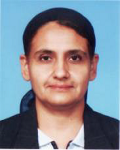
Biography:
My name is Sukhbeer Kaur. I am from Kuala Lumpur, Malaysia. Currently I am the Nursing Lecturer for the Department of Nursing, Faculty of Medicine and Health Sciences, Universiti Malaysia Sabah, Malaysia. I have obtained my basic nursing training at University Hospital Kuala Lumpur from 1990 to1993, post basic in Coronary Care Nursing (CCN) in 1999. In 2006, I graduated in Bachelor of Nursing Sciences (Hons) majoring in teaching from the Faculty of Medicine Universiti Malaya, followed by Master’s in Nursing Sciences from University Malaya too. My area of research interest is in cardiac and critical care. My publication on Nurse –Led Education on Knowledge, Attitude and Belief towards acute coronary syndrome was recently accepted for online publication at Nursing in Critical Care journal (BACCN) in 2016.
Abstract:
Problem statement: Coronary heart disease (CHD) has emerged as a number one killer in Malaysia and globally. Much of the morbidity and mortality in Acute Coronary Syndrome (ACS) patients is due to the delay in recognizing their symptoms which contributes to delay in seeking in early treatment. Decision delay and symptom interpretation is influenced by individual knowledge, attitude and belief about ACS. Purpose: This study evaluates the responses of knowledge, attitude and belief towards the ACS symptoms and the association with the patient’s clinical history. Methods: A quasi non-equivalent pre and post-test design took place in one of the tertiary hospital Malaysia. A total of 60 coronary patients were recruited in this study. Knowledge, attitude and belief responses about ACS were measured using the ACS Response Index questionnaires. The responses were evaluated at baseline and post 1 month period after the education intervention. Results: The total knowledge, attitude and belief scores increased from baseline to 1 month post intervention with a significance difference of (p<0.05) with knowledge (p=0.034), attitude (p=0.000) and belief (p=0.009). The difference in the total attitude scores were independently associated with patient’s clinical history of have gone for open heart surgery (p =0.049), diabetes mellitus (p=0.018) and involvement in cardiologist care (p=0.002). Total belief scores were independently associated have done angioplasty with stent (p=0.026) and have gone for open heart surgery (p=0.024). Total knowledge scores were independently associated with diabetes mellitus (p=0.037). Conclusions and relevance: Nurse led education have imparted positive outcome in recognizing the ACS symptoms among coronary patients. Therefore, decision in delaying symptom interpretation is improved
Key words: Acute Coronary Syndrome (ACS), knowledge, attitude and belief.
UÄŸur Cavlak
Pamukkale University, Turkey
Title: Risk factors related falling and management in older adults

Biography:
I am a former tenured professor at Pamukkale University, School of Physical Therapy and Rehabilitation, Denizli, Turkey. I graduated from Hacettepe University in 1989. I also finished my Master Degree (1992) and PhD studies (1996) in Hacettepe University. I directed the School of Physical Therapy and Rehabilitation at Pamukkale University (2001-2016). I teach research in physical therapy, neurorehabilitation, community based rehabilitation, and geriatric rehabilitation. I have the best paper in stroke rehabilitation award in a Congress organized by Turkish Physical Therapy Association, 1992, Ankara – Turkey. I have been selected Erasmus Academic Minister-2016 by The European Association of ERASMUS Coordinators (EAEC) in Thessaloniki, Greece, 2016. I have trained numerous PhD. students, now gainfully employed in academia, and handled a number of successful tenure cases as Department Head.
Abstract:
The world is aging very fast. Aging is not a disease or disability, even though significant numbers of the elderly suffer from disabilities. There are multiple chronic diseases that may be associated with aging. Older people frequently fall. This is a serious public health problem, with a substantial impact on health and healthcare costs. A fall can be defined as a sudden, unintentional change in position causing an individual to land at a lower level, on an object, the floor, or the ground, other than as a consequence of sudden onset of paralysis, epileptic seizure, or overwhelming external force. Risk factors of falling include the following (in general):
Intrinsic factors: • Effects of aging on gait, balance, and strength
• Acute medical conditions & chronic diseases
• Inactivity
• Behavioral symptoms and unsafe behaviors
• Medication side effects
Extrinsic fall risk factors: • Environmental hazards
• Unsafe equipment
• Unsafe personal care items
Examples of specific extrinsic risk factors: • Poor lighting
• Cluttered living space & Uneven floors, wet areas
• Unstable furniture
• Improper footwear
• Hard-to-manage clothing
The speech objectives are instructed to knowledge risk factor related falling and its management in care of older people. This speech offers topics in geriatric rehabilitation, especially the principles of falls management. At the conclusion of the speech, the audiences would understand issues related to the common problems seeing in geriatric population, especially gait and balance problems and falls, and a point of view of a physiotherapist and apply this knowledge to an interdisciplinary approach to older people care.
Collette Kirwan
National University of Ireland, Ireland
Title: Who should screen for IPV in antenatal care setting? Findings from an Irish based case study

Biography:
Collette Kirwan currently completing PhD on Factors that influence implementation and managing universal screening for intimate partner violence in antenatal care setting through National University of Ireland, Galway. Experience working in nursing and clinical research and in the development sector on HIV/Aids, Gender and primary health case. Current working as research associate with the Clinical Research Facility, National University of Ireland, Galway (NUIG) Ireland.
Abstract:
Violence against women is a fundamental violation of human rights and a serious international public health problem, that has irrevocable physical, psychological and sexual cost to women, their family and society in general (WHO, 2013). IPV, affecting up to 1 in 3 women (35%) (WHO, 2017) occurs across a lifespan and can start as soon as a person starts having intimate relationships (Niolon et al., 2017). Incidence of new cases and severity of pre-existing abuse has been found to increase up to 30% during pregnancy (HSE, 2011). Antenatal care is seen an opportunity to enquire routinely about intimate partner violence, because of the dual vulnerability of pregnancy (WHO, 2013).
Routine enquiry for IPV in antenatal care, currently advocated by national policy on domestic, sexual and gender-based violence in the Republic of Ireland, involves asking everywoman accessing antenatal care about their safety with their partner and in their home. As part of a case study exploring the factors that influence IPV screening in antenatal care, interviews were conducted with women accessing antenatal care services (40 persons) and healthcare professionals providing care (30 persons) in three maternity hospitals in Republic of Ireland. The aim of this presentation is to present the finding from these interviews on the preferred role, approach and characteristics of the healthcare professional to screen for IPV as part of antenatal care.

Biography:
A practicing physician in the field of healthcare in the state of Kerala in India for the last 29 years and very much interested in basic research. My interest is spread across the fever , inflammation and back pain,. I am a writer. I already printed and published nine books in these subjects. I wrote hundreds of articles in various magazines.
After scientific studies we have developed 8000 affirmative cross checking questions. It can explain all queries related with fever
Abstract:
According to the facts of physics, if temperature increases, thermal expansion of an object is positive it will expand and with decrease of temperature it will shrink. Pressure will increase due to increase of temperature.
On the contrary, during fever we can see blood vessels and skin are shrunk, pressure decreases, body shivers, sleep increases, motion decreases, inflammation increases, body pain increases, blood circulation decreases, dislike cold substances etc...
In fever, the firing rate of Warm sensitive neurons decreases, and the firing rate of
Cold sensitive neurons increases.
At the same time if we apply hotness from outside by thermal bag or if we drink hot water, our body acts according to the Facts of Physics- increase of temperature pressure will also increase, expands blood vessels and skin, body sweats, motion will increase , inflammation will decrease , body pain will decrease, blood circulation will increase, like cold substances etc..
During fever, why our body acts against Facts of Physics? when disease increases, pressure and temperature will decrease. Blood circulation will decrease due to decrease of pressure. If the essential temperature of the body is going out, essential temperature and pressure will further decrease. This will further endanger the life or action of organ.
when disease increase, it is the sensible and discreet action of brain that tends to act against facts of physics to sustain life or protect organ .There is no way other than this for a sensible and discreet brain to protect the life or organ.
We will get a clear answer if we find out the purpose of fever, sensible and discreet action of brain . No medical books clarify this1
During fever, if the temperature of fever is not a surplus temperature or if it is not suppose to be eliminated from the body, the shrinking of skin and blood vessels, shivering of body, dislike towards cold substances etc are a protective covering of the body to increase blood circulation to important organs of the body it is against the facts of physics.
Ling Tong
Zhejiang University School of Medicine, China
Title: Relationship between meaningful work and job performance in nurses

Biography:
Tong Ling has her expertise in nursing administration in improving the quality of nursing care. She was a first researcher to research meaningful work in nurses in China. She is trying to create training courses of meaningful work in clinical nurses in China
Abstract:
Aims: The present study was designed to determine the relationship between meaningful work and job performance,and the impact of meaningful work on nursing care quality. Background: Meaningful work has been suggested as a significant factor affecting job performance, but the relationship has never been studied in nurses in China.Design: A descriptive correlational study was designed to assess the level of meaningful work, tasks, and contextual performance as well as their relationships.Methods: We used a stratified random-sampling approach to enrol nurses from hospitals. Multivariate regression analysis was applied to determine the relationship between meaningful work and their demographic data. Results: There were significant, positive relationships between meaningful work and task performance and contextual performance. Education level, work unit, and employment type influenced meaningful work. The work motivation score of the nurses was lower than that of the other 2 dimensions, and a negative work motivation score negatively influenced job performance.
Conclusion: Improving meaningful work and providing more support and assistance can improve nurse performance, thereby improving the quality of nursing care.

Biography:
A practicing physician in the field of healthcare in the state of Kerala in India for the last 29 years and very much interested in basic research. My interest is spread across the fever , inflammation and back pain,. I am a writer. I already printed and published nine books in these subjects. I wrote hundreds of articles in various magazines.
After scientific studies we have developed 8000 affirmative cross checking questions. It can explain all queries related with fever
Abstract:
When the disease becomes threat to life or organs blood circulation decreases, Temperature of fever will emerges to increase prevailing blood circulation. And it acts as a protective covering of the body to sustain life.
When blood flow decrease to brain, the patient becomes fainted-delirious .If we try to decreases temperature of fever, the blood circulation will further reduced. Blood circulation never increases without temperature increase. Delirious can never be cured without increase in blood circulation.
The temperature of fever is not a surplus temperature or it is not to be eliminated from the body. During fever, our body temperature increases like a brooding hen`s increased body temperature.
The actual treatment to fever is to increase blood circulation. Two ways to increase blood circulation. 1. Never allow body temperature to lose 2. Apply heat from outside to the body. When the temperature produced by body due to fever and heat which we applied on the body combines together, the blood circulation increases.
Then body will stop to produce heat to increase blood circulation. And body will get extra heat from outside without any usage of energy.
How can we prove that the temperature of fever is to increase blood circulation?
If we ask any type of question related to fever by assuming that the temperature of fever is to increase blood circulation we will get a clear answer. If avoid or evade from this definition we will never get proper answer to even a single question
If we do any type of treatment by assuming that the temperature of fever is to increase blood circulation , the body will accept, at the same time body will resist whatever treatment to decrease blood circulation.
No further evidence is required to prove the temperature of fever is to increase blood circulation.
